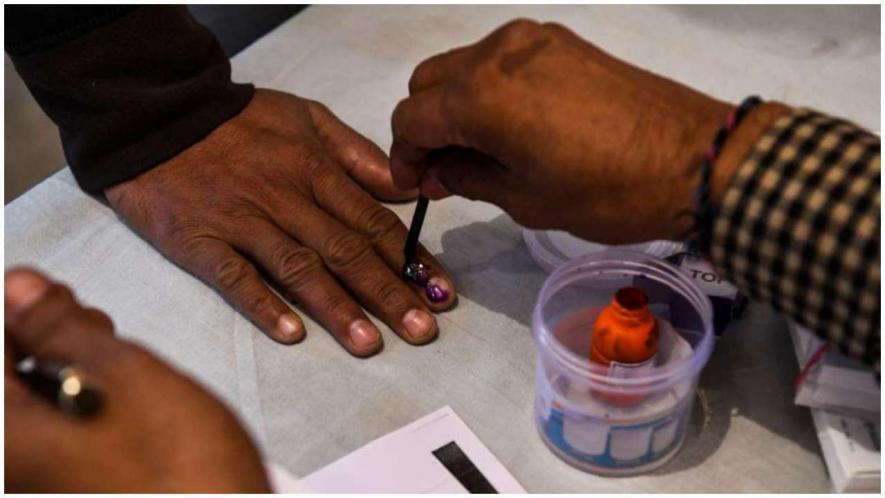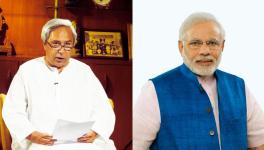BJP Scores Wins in this Electoral Round; Congress in Disarray

Representational Image. Image Courtesy: DNA India
The Bharatiya Janata Party (BJP) has put its year-long electoral blues behind it with a skin-of-the-teeth win in the Bihar Assembly elections and convincing victories in a hatful of by-elections. In all of these, the Congress has been soundly trounced. A major overhaul of the party is needed, without any further delay.
Though the exit polls in Bihar had predicted either close contests or emphatic victories for the mahagathbandhan comprising the Rashtriya Janata Dal (RJD), Congress and Left parties, the National Democratic Alliance (NDA) was widely expected by observers to win the state and remain in power. At the end, the NDA got 125 seats in a House consisting of 243 members, while the RJD-led alliance got 110. Yet, the Bihar result was even closer than these numbers suggest. In several constituencies, the margin was wafer-thin. The smallest margin recorded was in Hilsa, where the Janata Dal (United), JD-U candidate beat his RJD rival by just 12 votes. The JD-U won two more seats by 113 and 462 votes, while the Lok Janshakti Party (LJP) won its only seat by 333 votes. The RJD won Ramgarh by a margin of 189 votes, beating a Bahujan Samaj Party (BSP) candidate. The margin was less than 1,000 votes in six other constituencies, of which the NDA won two seats and the Opposition alliance three.
The vote shares of the NDA and the Opposition alliance are also revealing. The BJP and JD-U won 34.9% of the vote, down 10.5% from the 2019 Lok Sabha election, while the RJD and Congress won 32.6% of the vote, up 9.5%. The NDA thus underperformed again compared to the Lok Sabha results. The difference was that it squeaked through.
The BJP’s performance in Assembly elections since its convincing performance in the 2019 Lok Sabha elections had been poor. In October last year, it failed to get a majority in Haryana despite sweeping the state in the Lok Sabha, while in Maharashtra it failed to get the single-party majority it had been trumpeting. And earlier this year, it was convincingly defeated in Delhi and Jharkhand.
The main reason why the Opposition alliance fell short in Bihar was the poor performance of the Congress. The RJD has only itself to blame for ceding 70 seats to its ally, which managed to pick up only 19, with one of the lowest strike rates among the significant competitors. RJD leader Tejashwi Yadav should have played hard-ball. The Congress, as everyone knows, has barely any presence in the northern heartland. Moreover, its approach to selecting candidates and coordinating the campaign was shambolic. Congress leaders barely campaigned, with Rahul Gandhi putting in a few desultory appearances.
The RJD ultimately emerged as the single largest party in the state with 75 seats. It also had the largest share of the vote at 23.10% to the BJP’s 19.50. Even though the alliance lost, the RJD can take something from these elections, especially given the fact that it was being led by a 31-year-old with very limited political experience. In that sense, this was a triumph for Tejashwi Yadav.
It will no doubt please the BJP is that it has won elections in Bihar, Gujarat, Karnataka, Madhya Pradesh, Manipur, Telangana and Uttar Pradesh, in many cases wresting seats, despite its criminally bungled response to the pandemic and its culpability in heaping misery on migrant workers. Nothing’s stuck. In Uttar Pradesh, the Adityanath government’s crude, cacophonous majoritarianism and the lawlessness prevailing there, primarily due to the criminal behaviour of the police and other state actors, do not seem to have put off voters.
Let us concentrate on the Madhya Pradesh and Uttar Pradesh by-polls. The BJP also cleaned up here too, winning 41 of the 59 that went to the polls. Of these, 31 were wrested from the Congress. The most consequential of these by-elections were in Madhya Pradesh, where the result determined the fate of the Shivraj Singh Chouhan government, formed after the BJP induced Congress leader Jyotiraditya Scindia to change loyalties, which he did with 22 MLAs; a couple more joined later. The BJP needed nine wins out of 28 to remain in power. It won 19 seats to the Congress’s nine. Fifteen of the MLAs who had left with Scindia, including 11 ministers, won. Even though three high-profile ministers lost deep in Scindia territory, the turncoat turned out to be the big winner.
In Madhya Pradesh, the Congress was expected to do much better. First, 25 of the constituencies in which elections were held had been won by the Congress in December 2018 and the party had expected to be able to pin the “traitor” tag on Scindia. Second, the Chouhan government, which was formed in the early days of the pandemic, had offered a pathetic Covid-19 response, mainly because Chouhan ran a one-man government for weeks when Madhya Pradesh was on the front-lines, with practically the entire senior health bureaucracy infected and quarantined early on. Third, the central government’s handling of the crisis has been spectacularly inept, especially with regard to the migrant workers, a large number of whom are from the state.
Yet, the Congress bombed in Madhya Pradesh as well, because it has not even tried to fix the big problem it has there—a surfeit of leaders and relentless, internecine factional strife. The central leadership has proved both unwilling and unable to establish a chain of command because it lacks stability itself. This is another argument to fix the problem at the top, whether or not Rahul Gandhi takes over.
The BJP cantered home in Uttar Pradesh despite talk of the Congress showing signs of revival under Priyanka Gandhi Vadra’s stewardship. It was not seriously in evidence as the ruling party won six of seven by-elections, with the Samajwadi Party (SP) picking up the other one. Four of the six seats the BJP won had been held by it, while it wrested two from the SP, which retained one seat.
Though the Uttar Pradesh elections are due only in 2022, the results will surely be sweet music for the BJP. In the six seats the party won, the SP came second in three, the BSP in two and the Congress in one. Since the BJP’s return to power, the BSP has been extremely accommodating towards the ruling party. With the AIMIM, the BJP’s pet spoiler, expected to make a foray into Uttar Pradesh, perhaps in alliance with a complaisant BSP, things are looking good for the BJP in this crucial state.
It is undeniable that the BJP has won a major electoral round in Karnataka as well. It has beaten the Janata Dal (Secular) and the Congress and secured around 13,000 votes more than the Congress in Sira in Tumkur and 57,000 votes more than Congress in RR Nagar, Bangalore, where it fielded former Congress leader N Munirathna, who was disqualified under the anti-defection law in 2019. Munirathna and 16 other Congress and JD(S) leaders had triggered the fall of the coalition government in Karnataka with their resignations. Fourteen of them have contested in the resulting by-polls held in the state since last December, on BJP tickets. Twelve of them have won, which makes the defeat of the Congress on these seats even more ironic.
As things stand, it is not fit for purpose to discharge the role of the principal Opposition party.
The author is a freelance journalist and researcher. The views are personal.
Get the latest reports & analysis with people's perspective on Protests, movements & deep analytical videos, discussions of the current affairs in your Telegram app. Subscribe to NewsClick's Telegram channel & get Real-Time updates on stories, as they get published on our website.























